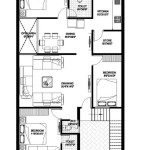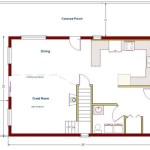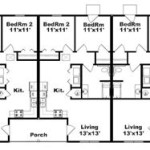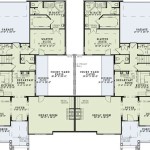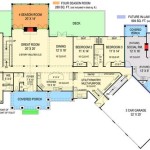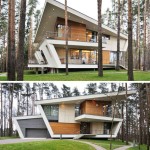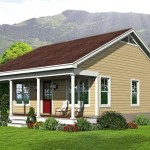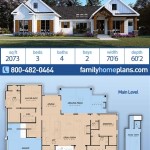Pole Barn Plans With Loft: Expanding Space and Functionality
Pole barns, also known as post-frame buildings, have become a versatile and cost-effective solution for a wide range of needs, from agricultural storage to workshops to even residential living. These structures are characterized by their use of large poles or posts embedded in the ground to provide structural support. When combined with a loft, a pole barn’s functionality is significantly enhanced, adding valuable square footage for storage, living space, or specialized activities.
The integration of a loft into pole barn plans requires careful consideration of several factors, including structural integrity, accessibility, intended use, and local building codes. Understanding these aspects is crucial for ensuring a safe, functional, and aesthetically pleasing outcome. This article will explore the key considerations and planning elements involved in incorporating a loft into pole barn designs.
Understanding the Benefits of a Loft in a Pole Barn
The primary advantage of incorporating a loft into a pole barn is the expansion of usable space without increasing the building's footprint. This is particularly beneficial in situations where land is limited or zoning regulations restrict building size. A loft provides an additional level that can be utilized for a variety of purposes. It allows for the segregation of activities within the barn. For example, a ground floor can be used for equipment storage or livestock, while the loft area can serve as an office, hobby space, or guest accommodation. This separation helps maintain organization and functionality within the structure.
Furthermore, a loft can significantly increase the resale value of a pole barn. A well-designed and properly constructed loft adds considerable appeal to potential buyers, as it offers increased versatility and usability. The added space can be a significant selling point, especially if the loft is finished and insulated for living purposes. Lofts can also offer enhanced aesthetic appeal to a pole barn. The presence of a loft can add visual interest and character to the interior of the structure, making it more appealing as a workspace or living area. This can be achieved through the incorporation of features such as exposed beams, strategic lighting, and well-placed windows.
Key Planning Considerations for Pole Barn Lofts
Before embarking on a pole barn with loft project, a thorough assessment of several factors is necessary. The first consideration is the intended use of the loft space. The purpose of the loft will dictate the specific design requirements, including load-bearing capacity, ceiling height, insulation, and ventilation. A loft intended for storage will have different needs than one intended for living space or a workshop.
The structural integrity of the pole barn is paramount. The addition of a loft increases the overall weight and stress on the structure. Therefore, the poles, beams, and foundation must be adequately sized and reinforced to support the additional load. A qualified engineer should be consulted to ensure the structural soundness of the design. Accessibility to the loft is another crucial aspect. The type of access, whether stairs, a ladder, or a ramp, should be carefully considered based on the intended use of the space and the physical capabilities of the users. Stairs are generally preferred for living spaces or areas requiring frequent access, while a ladder may suffice for occasional storage use.
Insulation and ventilation are particularly important if the loft is intended for living or working space. Proper insulation will help regulate temperature and reduce energy costs, while adequate ventilation will prevent moisture buildup and ensure air quality. The selection of appropriate insulation materials and ventilation systems should be based on the climate and the intended use of the loft.
Finally, a crucial step in the planning process is to thoroughly research and adhere to all applicable local building codes and regulations. These codes will govern aspects such as structural requirements, fire safety, accessibility, and energy efficiency. Failure to comply with building codes can result in costly delays, fines, or even the removal of the loft.
Structural Design and Construction of a Loft in a Pole Barn
The structural design of a pole barn loft involves several key elements that must be carefully calculated and implemented to ensure stability and safety. The first element is the load-bearing capacity of the loft floor. This capacity must be sufficient to support the intended use of the space, including the weight of furniture, equipment, and occupants. The floor joists and beams must be sized and spaced appropriately to handle the anticipated load. The method of attaching the loft framing to the existing pole barn structure is critical. The connections must be strong and secure to transfer the load from the loft to the poles and foundation. This typically involves the use of heavy-duty fasteners, brackets, and reinforcing plates.
The materials used in the construction of the loft should be durable and appropriate for the intended use. Pressure-treated lumber is often used for the framing to prevent rot and insect infestation. The flooring material should be chosen based on its durability, appearance, and comfort. Options include plywood, hardwood, laminate, or concrete. Construction techniques should be in accordance with industry best practices and local building codes. Proper bracing and support should be provided to prevent deflection and movement of the loft structure. A qualified contractor with experience in pole barn construction and loft additions should be hired to ensure the work is done correctly and safely.
The height of the loft is vital for its intended use to. Sufficient headroom is essential for comfortable movement and usability. The minimum ceiling height should be determined based on the intended use of the space. For living areas, a ceiling height of at least 7 feet is generally recommended. The loft framing needs to be integrated with the roof structure of the pole barn. This integration should be carefully planned to ensure that the roof remains structurally sound and watertight. Additional support may be required to accommodate the added weight of the loft.
Staircases need to be compliant with building codes regarding rise, run, and handrails. They should be designed with safety and ergonomics in mind. Ladders can be used for access to storage lofts, but they are generally not suitable for living spaces. A ramp can offer a more accessible option than stairs for some users, but it requires more space. The ramp needs to adhere to building codes regarding slope and handrails.
Electrical wiring, lighting, and plumbing (if applicable) need to be installed in accordance with electrical and plumbing codes. This may require the services of licensed electricians and plumbers. Adequate lighting is essential for safety and usability. Lighting fixtures should be chosen based on the intended use of the loft space. Plumbing fixtures (e.g., sinks, toilets, showers) should be installed if the loft is intended for living purposes. These fixtures should be connected to the pole barn's water and sewage systems. Attention to detail in all aspects of the structural design and construction is crucial for ensuring the long-term safety, functionality, and value of the pole barn loft.
Interior Design and Finishing of a Pole Barn Loft
The interior design and finishing of a pole barn loft are critical for creating a functional, comfortable, and aesthetically pleasing space. The selection of appropriate flooring, wall coverings, and ceiling treatments can significantly impact the overall look and feel of the loft. Flooring options include hardwood, laminate, carpet, and vinyl. Hardwood offers durability and a classic look, while laminate provides a more affordable and lower-maintenance alternative. Carpet can add warmth and comfort, while vinyl is a practical choice for areas prone to moisture. Wall coverings can range from drywall to paneling to exposed wood. Drywall provides a smooth, paintable surface, while paneling offers a more rustic appearance. Exposed wood can add character and warmth to the loft space.
Insulation plays a vital role in creating a comfortable and energy-efficient loft space. Proper insulation helps regulate temperature and reduces energy costs. Insulation options include fiberglass, cellulose, spray foam, and rigid board. Fiberglass is a cost-effective option, while cellulose is an environmentally friendly choice. Spray foam provides excellent insulation and air sealing, while rigid board is suitable for walls and ceilings. Choosing the right insulation material and thickness depends on the climate and the intended use of the loft.
Proper ventilation is essential for preventing moisture buildup and ensuring air quality. Ventilation options include windows, vents, and fans. Windows provide natural light and ventilation, while vents allow for passive air circulation. Fans can be used to circulate air and remove moisture. The use of appropriate finishes and materials can significantly improve the aesthetics and functionality of the loft. Consider color schemes, textures, and lighting when selecting finishes to create a cohesive and inviting space. The layout of the furniture and equipment should be carefully planned to maximize space utilization and functionality. Consider the flow of traffic and the placement of furniture to create a comfortable and efficient workspace or living area.
Effective lighting is critical for creating a functional and comfortable loft space. Lighting options include recessed lighting, track lighting, pendant lighting, and task lighting. Recessed lighting provides ambient illumination, while track lighting offers flexibility in directing light. Pendant lighting can add visual interest, while task lighting provides focused illumination for specific activities. Strategically placed windows and skylights can provide natural light and ventilation. The use of curtains or blinds can help control the amount of light entering the loft. Natural light can improve mood and productivity, while also reducing energy costs.

Pole Barn With Loft Affordable Extra Storage Kits

12 Pole Barn Plans With Lofts Twelve Optional Layouts Designs Construction

20 48 Pole Barn Shed With Loft Plans

Wood Stove Pole Barn Perfect Area In The Loft To Finish Off For A Place Kids Play Woodbuildings Building Homes

40x48x16 Pole Building With Loft 12 Fisher Brothers Builders

40x48x16 Pole Building With Loft 12 Fisher Brothers Builders

20 48 Pole Barn Shed With Loft Plans

How To Build A Pole Barn With Loft Building House Plans

12 Pole Barn Plans With Lofts Twelve Optional Layouts Complete Construction Blueprints

Barn Loft Construction Building Garage

